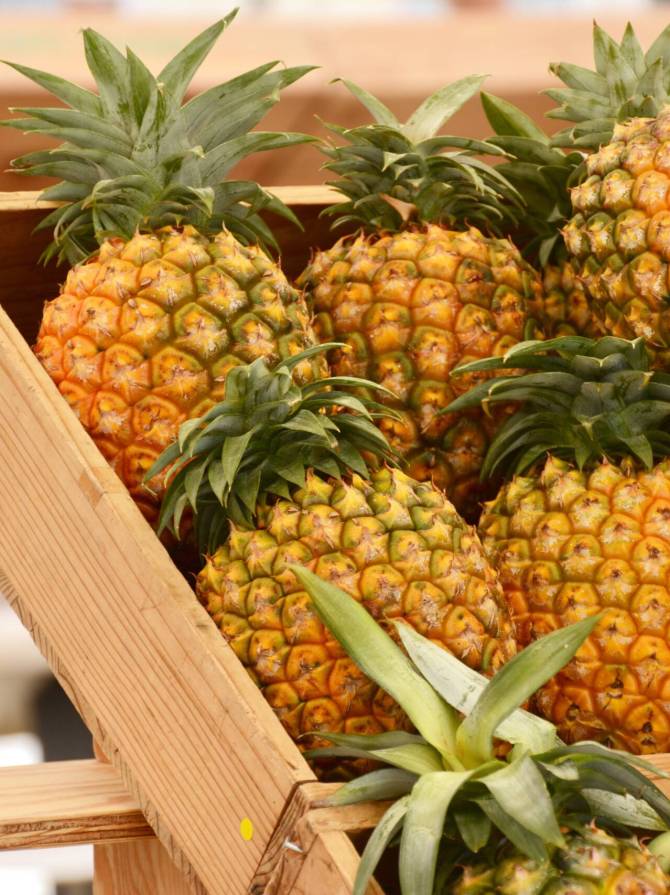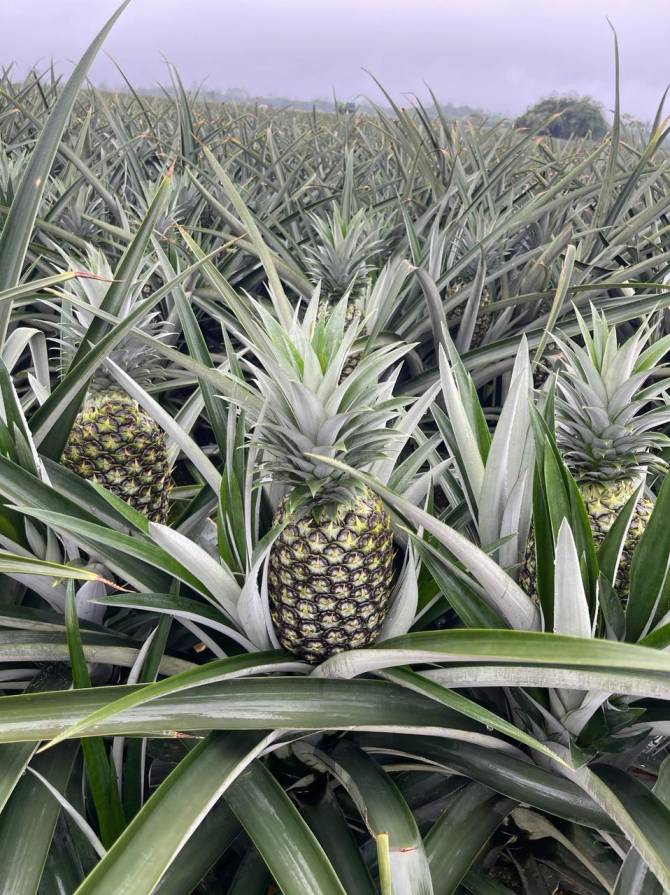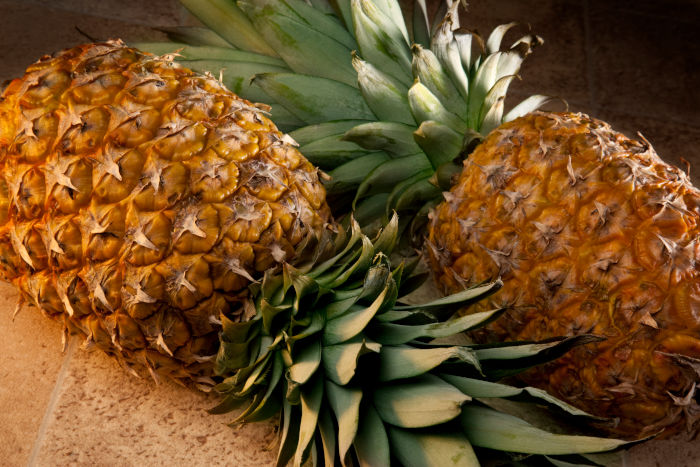



General description and characteristics
The tropical pineapple, scientifically known as Ananas comosus, is an exotic plant from the bromeliad family, characterized by its fragrant and sweet fruit. This fruit, unique in its composite structure, originally comes from South America, especially from Brazil. Pineapple has been cherished throughout history for its delicious flavor and its symbolism of hospitality, as evidenced by its use as a welcoming gesture to Columbus and his entourage on their first landing in the Americas.
With different botanical varieties, pineapple offers options without seeds, with seeds capable of germination, and with leaves that facilitate its collection. This tropical fruit is not only a delight to the palate but also a demonstration of the richness and diversity of the South American flora that has conquered the tastes of people worldwide.
Sensorial and physicochemical characteristics
- Appearance: Fleshy fruit
- Color: Green changing to yellow near harvest
- Flavor: Delightfully tangy-sweet to the palate
- Brix Degree: Between 12 and 14 degrees of soluble solids
- Acidity Level (PH): Acidic, in a range of 4.5 to 5.5
- Citric Acidity: Maximum 1%
Storage and Transportation Requirements for Pineapple
- Ideal Temperature: 7 Degrees Celsius
- Required Relative Humidity: Between 85% and 90%
- Type and Packing Unit:
- 12 kg Tray Box
- 22XU Box of 23 kg
- Packing Weight:
- 12 kg Tray: 5-6-7-8-9-10 fruits
- 22XU of 23 kg: 10-12-14-16-18 fruits
- Quantity per Container:
- 12 kg Trays: 1575-1680 units
- 22XU Boxes of 23 kg: 1080 units
- Boxes per Pallet:
- 12 kg Trays: 75-80 boxes/pallet
- 22XU Boxes of 23 kg: 54 boxes/pallet
- Labeling: All fruits must have the brand label
- Required Certifications: GLOBAL GAP and ISO 1400 for exportation
- Shelf Life and Storage Conditions:
- Temperature of 7 °C with relative humidity of 90 - 95%
- Durability of 28 days post-harvest
- Type and Transport Conditions: Use containers and pallets ensuring a temperature of 7-8 °C to prevent the development of fungi during dispatch.

Brands

Nutritional Composition
| Per 100 g of edible portion | Per serving (160 g) | Recommended daily intake – men | Recommended daily intake – women | |
|---|---|---|---|---|
| Energy (Kcal) | 94 | 99 | 3,000 | 2,300 |
| Proteins (g) | 1.2 | 1.3 | 54 | 41 |
| Total lipids | 0.3 | 0.3 | 100-117 | 77-89 |
| Saturated FA (g) | 0.11 | 0.12 | 23-27 | 18-20 |
| Monounsaturated FA (g) | 0.04 | 0.04 | 67 | 51 |
| Polyunsaturated FA (g) | 0.09 | 0.10 | 17 | 13 |
| V-3 (g)* | 0.052 | 0.055 | 3,3-6,6 | 2,6-5,1 |
| C18:2; Linoleic (v-6) (g) | 0.039 | 0.041 | 10 | 8 |
| Cholesterol (mg/1000 kcal) | 0 | 0 | <300 | <230 |
| Carbohydrates (g) | 20 | 21.1 | 375-413 | 288-316 |
| Fiber (g) | 3.4 | 3.6 | >35 | >25 |
| Water (g) | 75.1 | 79.3 | 2,500 | 2,000 |
| Calcium (mg) | 9 | 9.5 | 1,000 | 1,000 |
| Iron (mg) | 0.6 | 0.6 | 10 | 18 |
| Iodine (μg) | 2 | 2.1 | 140 | 110 |
| Magnesium (mg) | 38 | 40.1 | 350 | 330 |
| Zinc (mg) | 0.23 | 0.2 | 15 | 15 |
| Sodium (mg) | 1 | 1.1 | <2.000 | <2.000 |
| Potassium (mg) | 350 | 370 | 3,500 | 3,500 |
| Phosphorus (mg) | 28 | 29.6 | 700 | 700 |
| Selenium (μg) | 1 | 1.1 | 70 | 55 |
| Thiamine (mg) | 0.06 | 0.06 | 1.2 | 0.9 |
| Riboflavin (mg) | 0.07 | 0.07 | 1.8 | 1.4 |
| Niacin equivalents (mg) | 0.8 | 0.8 | 20 | 15 |
| Vitamin B6 (mg) | 0.51 | 0.54 | 1.8 | 1.6 |
| Folates (μg) | 22 | 23.2 | 400 | 400 |
| Vitamin B12 (μg) | 0 | 0 | 2 | 2 |
| Vitamin C (mg) | 10 | 10.6 | 60 | 60 |
| Vitamin A: Ec. Retinol (μg) | 18 | 19.0 | 1,000 | 800 |
| Vitamin D (μg) | 0 | 0 | 15 | 15 |
| Vitamin E (mg) | 0.2 | 0.2 | 12 | 12 |
Tariff Heading
| Type | Fresh fruits, vegetables, and tubers |
| Subtype | Fruit |
| Product Name (Scientific Name) | Pineapple (Ananas comosus) |
| Recommended heading | 0804300000 |
| Unit of measurement according to tariff | Kg |
| Agrocalidad Code | A0002 |


